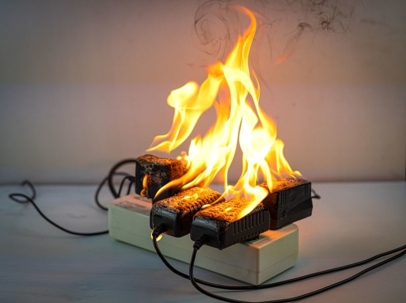While we are privileged to live in a period where electrical energy is safer and more reliable than ever before, it isnandrsquo;t without risks. And there is one risk in particular that, while extremely rare, could cause significant damage to your home in the blink of an eye. That risk is a power surge. A power surge can cause immense and sometimes irreparable damage to virtually anything connected to an electrical circuit in an extremely short amount of time, as well as causing injury to anyone who might be close or using something plugged in when the surge happens.
What Is a Power Surge?
A power surge is a sudden, sharp spike in voltage and current flowing through an electrical circuit. Under normal conditions, the power running to your outlets is at about 110 to 120 volts and up to no more than a couple of amps or so for even the most robust circuits. During a surge, however, that number can ramp up into the thousands or even tens of thousands of volts, greatly overpowering anything that might be plugged in. That can cause wires to melt, components to blow out or burn out and even damage to hardware such as outlets, switches and more.
What causes a power surge? There are several causes, but here are the three most common:
Overdraw of the Public Grid
The most common cause of power surges here in California is an overdraw of the public grid. The public grid uses a number of different robust pieces of equipment to carefully monitor and maintain voltages at a consistent level, but extremely heavy loads can cause the grid to buckle under the strain, resulting in failures that create surges.
The most common time for this to happen is during the peak of the hottest months, generally around July and August and particularly during late afternoons when daily temperatures tend to be the warmest. This is when the majority of homes and businesses have their air conditioners cranked down low and blasting as high as they can, resulting in a ton of energy draw. This puts a lot of strain on the grid, potentially resulting in a sudden surge when the grid can no longer keep up and regulate everything properly.
Equipment Failure
While they are the most common during the peak heat season, a failure in the electrical grid can result in a direct surge. As different components in our electrical grid age and wear out, they eventually fail. And that failure, as we have seen, can be catastrophic. It was a failure that caused the devastating Camp Fire resulting billions of dollars in damages - and ultimately itandrsquo;s nearly impossible to predict when and where something else might fail. Substations (high-voltage electrical facilities) fail, transformers blow out and regulators eventually stop working through the normal passage of time. That can create extensive power outages and surges in the moments that lead up to the failure, resulting in potentially serious damage to anything that was directly connected to the failed component.
Foul Weather
Finally, California is privileged to enjoy some of the best weather in the world. However, our skies can turn nasty and big storms do present a serious problem, just like they would anywhere else. So much of our electrical transmission equipment is based outside, suspended high above our heads and that means these lines and poles are particularly susceptible to damage from Mother Nature.
High winds, lightning strikes and heavy rains can all put a lot of strain on the equipment that carries our power - and an unexpected, weather-created problem could create a sudden surge. Lightning strikes are perhaps the most common, as they tend to hit tall, metallic objects like suspended powerlines. When they do, they can send a huge spike through the line that proliferates for miles.
Protecting Your Property from a Surge
What can you do to protect your home from the potential danger of a power surge? The answer is simple: whole-home surge protection. Think of it sort of like a surge protector strip into which you would plug your computer or other important electronics, only for your entire home. These devices are installed on your main electrical panel, near your electrical entrance and act as a “pressure releaseandrdquo; valve for sudden spikes in energy. As a result, your home will remain protected from surges and youandrsquo;ll save yourself a bundle on repair costs the instant a surge hits your lines. That peace of mind alone makes this upgrade well worth it for most people.
Interested in getting a whole-home surge protection system for your home? Valley Heating, Cooling, Electrical and Solar is here to help! Call us at (408) 868-5500 today to set up your installation appointment.

